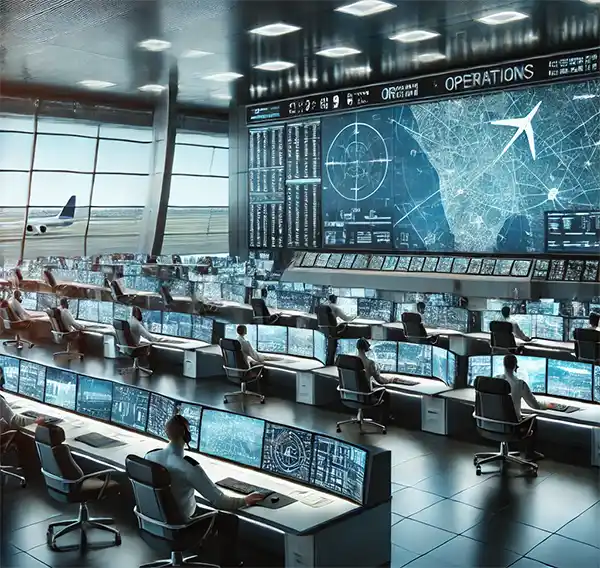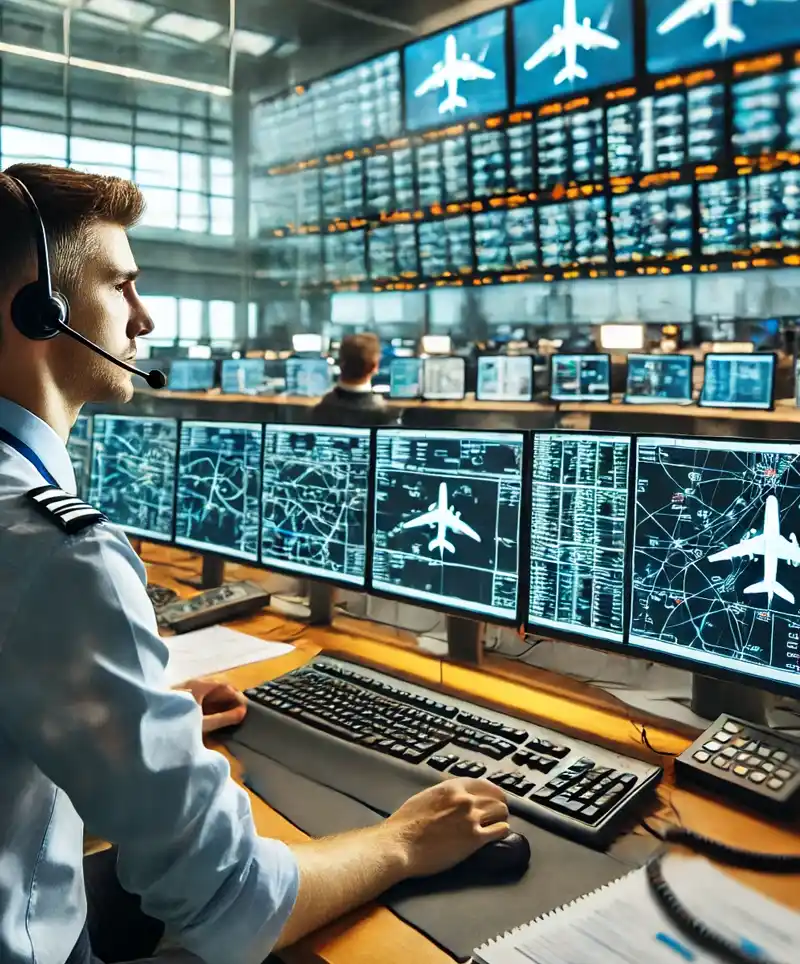A Day in the Life of an Air Traffic Controller
Imagine playing a high-stakes video game where the lives of thousands depend on your every move. That's pretty much the daily reality for air traffic controllers. These heroes of the skies are responsible for guiding planes safely through the labyrinth of airspace, ensuring that takeoffs, landings, and in-flight operations run like clockwork.
An air traffic controller’s day typically involves:
- Monitoring multiple radar screens.
- Communicating with pilots using aviation's unique lingo.
- Managing unforeseen challenges like bad weather, mechanical issues, or the occasional wayward flock of geese.
The Origins of National Air Traffic Control Day
National Air Traffic Control Day was officially established in 1986 by President Ronald Reagan. This day commemorates the 50th anniversary of the establishment of the air traffic control system in the United States, a system that has become a model for air safety worldwide.
The story begins in the early 20th century, when air travel was in its infancy. Back then, flying was a bit like the Wild West – pilots navigated using visual landmarks, and there were no standardized procedures for ensuring safe distances between planes. This all changed with the introduction of the first air traffic control tower at Cleveland Hopkins International Airport in 1930. This pioneering tower used flags to communicate with pilots, a far cry from today's sophisticated radar and computer systems.
As air travel grew, so did the need for a more organized approach to managing air traffic. In 1936, the Bureau of Air Commerce, a predecessor of the Federal Aviation Administration (FAA), began experimenting with air traffic control centers in Newark, New Jersey, Chicago, Illinois, and Cleveland, Ohio. These early centers laid the groundwork for a national network of air traffic control.
By the 1950s, with commercial air travel booming, the need for a comprehensive air traffic control system became even more apparent. The introduction of radar technology revolutionized air traffic control, allowing controllers to track aircraft in real time and manage increasingly crowded skies with greater precision.
The establishment of the FAA in 1958 marked a significant milestone in the development of air traffic control. The FAA was tasked with creating a unified system to ensure the safety and efficiency of air travel across the United States. Over the decades, the FAA has continued to innovate, implementing advanced technologies and procedures to keep pace with the ever-growing demands of air travel.
 President Reagan's proclamation in 1986 recognized not only the historical significance of air traffic control but also the dedication and expertise of the thousands of men and women who keep our skies safe every day. By celebrating National Air Traffic Control Day, we honor these professionals and acknowledge their critical role in modern aviation.
President Reagan's proclamation in 1986 recognized not only the historical significance of air traffic control but also the dedication and expertise of the thousands of men and women who keep our skies safe every day. By celebrating National Air Traffic Control Day, we honor these professionals and acknowledge their critical role in modern aviation.
Today, the United States boasts one of the most advanced and efficient air traffic control systems in the world, thanks to the vision and hard work of those early pioneers and the ongoing efforts of today's air traffic controllers. So, on July 6th, take a moment to appreciate the incredible journey of air traffic control, from its humble beginnings to the high-tech marvel it is today.
Fun Facts About Air Traffic Control
-
Air Traffic Controllers Speak Their Own Language: Pilots and controllers use a specialized form of communication called Aviation English, which is filled with terms like "roger," "wilco," and "squawk." Imagine asking your friend to "squawk" at a party—you might get some funny looks!
-
The Sky is Divided into Sectors: Just like a giant, invisible pie, the sky is divided into sectors. Each sector is managed by different air traffic controllers, ensuring a seamless handoff as planes move across the country.
-
Air Traffic Control Towers Have the Best Views: These towers are often the tallest structures at airports, providing controllers with a bird's-eye view of the action. It’s like having box seats at the world’s most exciting sports event – every day!
The Serious Side of the Job
Despite the lighthearted moments, being an air traffic controller is a serious business. It requires intense concentration, quick decision-making, and the ability to stay calm under pressure. Controllers often work long shifts, including nights, weekends, and holidays, because, let’s face it, the sky never sleeps.
The training to become an air traffic controller is rigorous. It involves extensive education, simulation exercises, and on-the-job training. Only those with nerves of steel and exceptional multitasking abilities make the cut. It's no wonder air traffic controllers are considered among the most highly skilled professionals in the world.
Celebrating National Air Traffic Control Day
How can you celebrate this important day? Here are a few suggestions:
-
Visit an Airport: Many airports offer tours where you can get a behind-the-scenes look at the control tower. Seeing the action up close is an eye-opening experience.
-
Thank a Controller: If you happen to know an air traffic controller, take a moment to thank them for their hard work. A little appreciation goes a long way.
-
Watch a Documentary: There are several excellent documentaries about air traffic control. These films provide a deeper understanding of the complexities and challenges of the job.
National Air Traffic Control Day is a time to recognize and appreciate the critical role that air traffic controllers play in our everyday lives. The next time you fly, remember that a team of dedicated professionals is working tirelessly to ensure your safety and comfort.
So, let’s raise a virtual toast to the guardians of the skies. Here’s to clear skies, safe landings, and the extraordinary men and women who make it all possible!
Happy National Air Traffic Control Day!
Please Share our Content






 President Reagan's proclamation in 1986 recognized not only the historical significance of air traffic control but also the dedication and expertise of the thousands of men and women who keep our skies safe every day. By celebrating National Air Traffic Control Day, we honor these professionals and acknowledge their critical role in modern aviation.
President Reagan's proclamation in 1986 recognized not only the historical significance of air traffic control but also the dedication and expertise of the thousands of men and women who keep our skies safe every day. By celebrating National Air Traffic Control Day, we honor these professionals and acknowledge their critical role in modern aviation.








 "Sláinte!" is a traditional Irish expression used as a toast, equivalent to "Cheers!" in English.
"Sláinte!" is a traditional Irish expression used as a toast, equivalent to "Cheers!" in English.